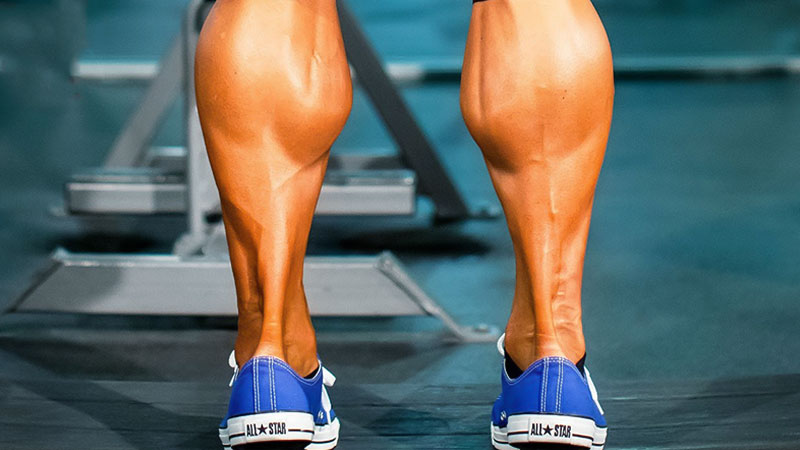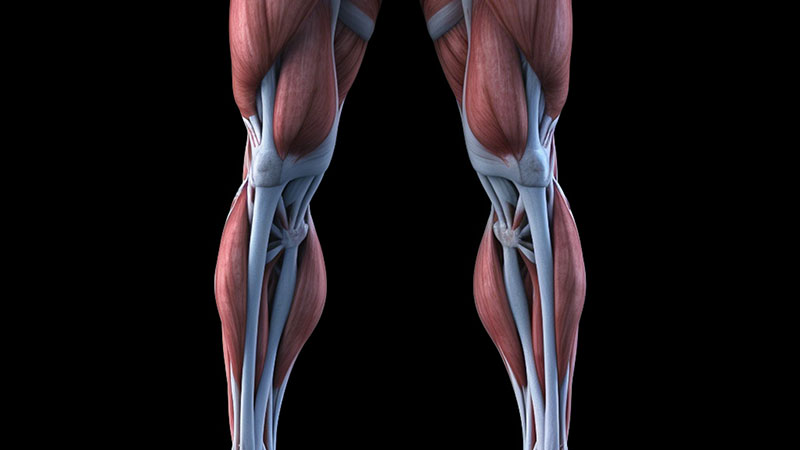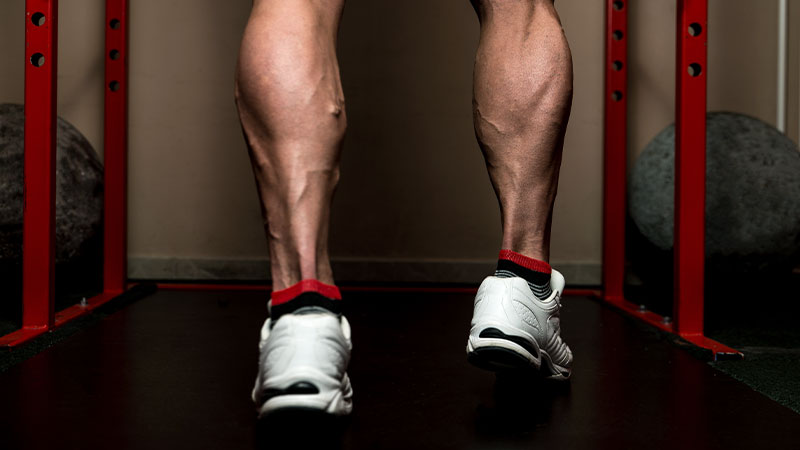Understanding the reasons behind their muscular calves is crucial, especially for those on a weight loss journey looking to tone their legs.
Surprisingly, it’s not just Filipinos; many Asians share this trait, often attributed to their body proportions and diet rich in carbohydrates like rice.
While there’s no definitive study on this phenomenon, it’s fascinating to explore how Filipino culture and genetics contribute to their muscular lower legs.
With over 8 million Filipinos actively engaged in bodybuilding, it’s no surprise they lead the global fitness industry.
Join us as we unravel the secrets behind Filipino calves and debunk the myths surrounding this intriguing aspect of their physique.

Why Are Filipino Calves So Big?
The phenomenon of big calves among Filipinos is a striking aspect of their physical appearance that has fascinated many observers.
This distinctive trait, characterized by well-developed calf muscles, is often the subject of admiration and curiosity.
The Role of Genetics in Calf Size
Filipinos are genetically predisposed to have larger calf muscles compared to other populations. This phenomenon can be attributed to the unique genetic makeup of Filipinos, which influences the development of their calf muscles.
The genetic factors responsible for the larger calf size in Filipinos have been passed down through generations, contributing to this distinctive physical characteristic.
The muscle composition of Filipinos, specifically their higher percentage of slow-twitch muscle fibers, also plays a significant role in the development of their large calf muscles.
These muscle fibers are more resistant to fatigue, allowing for greater endurance and potentially contributing to the prominent calves commonly seen in Filipino individuals.
Cultural and Environmental Influences
In addition to genetics, cultural and environmental factors play a significant role in the development of big calves in Filipinos.
The lifestyle and activities common in Filipino culture, such as walking, running, and engaging in traditional dance forms, contribute to the strengthening and growth of calf muscles.
The terrain and climate in the Philippines also play a part, as walking on hilly or uneven surfaces can further enhance calf muscle development.
Overall, the combination of genetic predisposition and cultural influences contributes to the phenomenon of big calves in Filipinos.
The Biomechanics of Calf Muscles

The calf muscles play a crucial role in various biomechanical functions of the lower body, particularly in locomotion and posture.
Here’s an overview of the biomechanics of the calf muscles:
Understanding the Anatomy of Calves
When exploring why Filipinos tend to have well-developed calves, it’s essential to grasp the biomechanics behind calf muscles.
The calves are composed of two main muscles: the gastrocnemius and the soleus. The gastrocnemius is the larger, more visible muscle located at the back of the lower leg, giving it that defined shape.
On the other hand, the soleus lies underneath the gastrocnemius and plays a crucial role in movements like standing and walking.
Activities That Contribute to Calf Development
The unique anatomy of the calf muscles in Filipinos can be attributed not only to genetic factors but also to their active engagement in various activities that heavily involve these muscles.
Traditional pursuits such as walking, running, dancing, and even activities like climbing hills or stairs contribute significantly to calf muscle development.
The terrain and climate in the Philippines, which often require walking or hiking in hilly areas, further stimulate calf muscle growth. Engaging in these activities regularly can naturally lead to stronger and more prominent calf muscles.
The Myths: Are Big Calves Unattractive?

The perception of attractiveness, including opinions on the size of specific body parts like calves, varies greatly among individuals and across different cultures.
Here are a few points to consider regarding the myth that big calves are universally unattractive:
Societal Perceptions of Calf Size
Have you ever wondered if having big calves is considered unattractive? In some societies, there may be misconceptions about calf size and its impact on attractiveness.
However, it’s essential to understand that beauty standards vary across cultures. While some may perceive larger calves as less attractive, others appreciate well-defined calf muscles as a symbol of strength and athleticism.
In Filipino culture, having big calves is often seen as a desirable trait due to the association with physical strength and resilience.
The Filipino people tend to admire individuals with muscular calves as it reflects an active and healthy lifestyle, which is highly valued in their society.
Embracing Body Diversity
When it comes to body diversity, celebrating differences is key. Your calf size is a unique aspect of your physique that reflects your genetic makeup, lifestyle, and cultural background.
Instead of conforming to narrow beauty ideals, embracing body diversity allows you to appreciate the natural variation in human anatomy.
Whether you have big calves, slender calves, or anything in between, it’s essential to embrace and love your body just the way it is.
While genetics play a significant role in determining calf size, lifestyle factors like physical activity and cultural influences also contribute to the development of larger calves among Filipinos. Embracing these differences fosters body positivity and self-acceptance.
Fitness Focused: Achieving Healthier Calves

Achieving healthier calves involves a combination of strength training, flexibility exercises, and cardiovascular activities.
Here’s a fitness-focused guide to help you develop stronger, more resilient calves:
Tips for Cardio that Enhances Calf Muscles
Engage in high-intensity interval training (HIIT) workouts like sprints, stair climbing, or cycling to target your calf muscles effectively.
These cardio exercises help strengthen and tone your calves by putting them under varying levels of stress, promoting muscle growth and definition.
Consistent cardio routines can contribute significantly to healthier and more defined calf muscles.
Effective Stretching Techniques for Calves
Incorporate regular calf stretches into your fitness routine to improve flexibility and prevent tightness. Perform gastrocnemius and soleus stretches to target both calf muscles effectively.
Maintain each stretch for 15-30 seconds to ensure adequate muscle elongation. Stretching enhances blood circulation, reduces the risk of injury, and promotes overall calf muscle health.
Safe Practices for Toning Calves
When toning your calves, ensure to use proper form and technique to prevent strain or injury. Start with bodyweight calf raises and gradually increase resistance with weights or resistance bands.
Focus on controlled movements and a full range of motion to engage the calf muscles effectively. It’s essential to listen to your body, avoid overtraining, and allow for adequate rest and recovery between calf-focused workouts to promote muscle growth and strength.
Frequently Asked Questions
Why do Filipinos have large calves?
Filipinos have large calves due to a combination of genetic predisposition and cultural practices like walking, running, and dancing, which significantly develop calf muscles.
How do genetics contribute to well-defined calf muscles?
Genetics play a role in Filipinos’ well-defined calf muscles by influencing muscle fiber composition and muscle structure, contributing to calf muscle development.
What cultural activities in the Philippines affect calf muscle development?
Activities such as walking, running, dancing, and navigating hilly terrains in the Philippines play a significant role in developing well-defined calf muscles among Filipinos.
How can individuals achieve healthier calves?
Engaging in high-intensity interval training (HIIT) workouts like sprints and stair climbing, regular calf stretches for flexibility, and safe toning techniques can help individuals achieve healthier calves.
What role do genetics and cultural activities play in calf muscle health?
Genetics influence muscle development, while cultural activities like traditional dances and navigating hilly terrains contribute to the overall health and strength of calf muscles.
Conclusion
Understanding the factors contributing to the well-defined calves of Filipinos reveals a blend of genetics and cultural practices.
The combination of genetic predisposition and traditional activities like walking, running, and dancing in the Philippines shapes their calf muscles.
Engaging in activities that target the gastrocnemius and soleus muscles plays a key role in developing strong and toned calves.
By incorporating HIIT workouts, calf stretches, and safe toning techniques into your fitness routine, you can achieve healthier calf muscles.
Remember to focus on proper form, controlled movements, and ample rest for optimal calf muscle growth and overall leg strength. Explore these insights to enhance your calf muscle health effectively and achieve your fitness goals.
I am a fitness instructor and I have been in the industry for 9 years. I have a passion for health and fitness.
I am a fitness instructor with over 9 years of experience in the industry. My passion is health and fitness and I would love to share my knowledge with you!